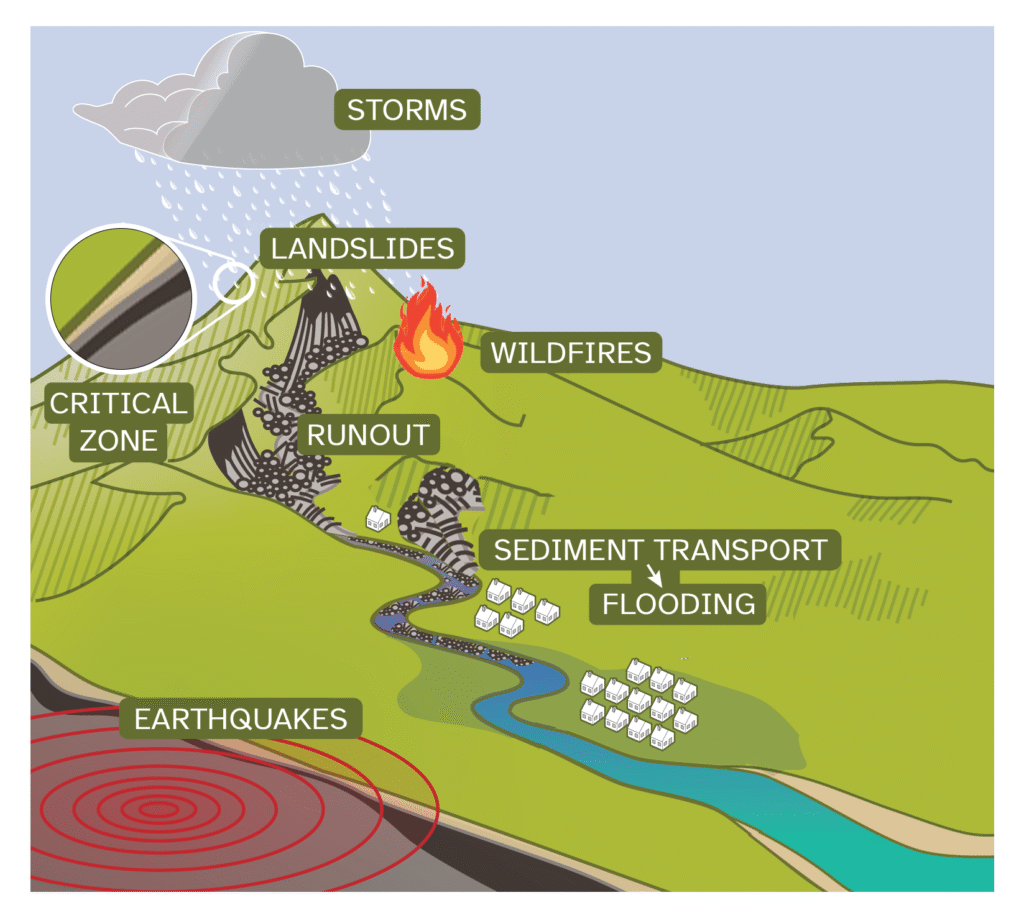
The University of Michigan (U-M) has been awarded a $15 million grant from the U.S. National Science Foundation to establish the Center for Land Surface Hazards (CLaSH). This new initiative aims to advance research on the processes that cause landslides, river erosion, debris flows, and flooding. In collaboration with over a dozen academic, governmental, and community partners, CLaSH will tackle the challenges posed by cascading land surface hazards, which are interconnected natural events that can have prolonged and devastating impacts on communities.
Directed by Marin Clark, a professor in the Department of Earth and Environmental Sciences at U-M, CLaSH will develop innovative scientific frameworks and modeling tools to forecast and mitigate these hazards. The center will also focus on expanding the workforce of experts in land surface hazards and fostering community engagement, particularly in areas most affected by these natural events.
Understanding Cascading Hazards
Natural disasters such as hurricanes, wildfires, and earthquakes often lead to secondary events like landslides and flooding. These cascading hazards pose significant challenges for prediction and management. According to Clark, the principal investigator of the center, CLaSH’s approach is unique because it examines a series of processes that create land surface hazards and their interconnections.
“What’s new about our center is that we’re not just looking at a single hazard phenomenon. We’re really looking at a series of processes that create land surface hazards and how they link together,” said Clark.
Clark emphasized the importance of this research, noting that land surface hazards can occur anywhere, including all 50 U.S. states, and may persist for years to decades. This makes it crucial for society to be better prepared for these common hazards.
The Role of Technology and Collaboration
CLaSH will leverage recent technological advances in remote sensing, robotics, and sensors to monitor geologic processes more effectively than ever before. Co-principal investigator Dimitrios Zekkos, a geotechnical engineer at the University of California, Berkeley, highlighted the unprecedented opportunities these technologies offer.
“Recent technological advances in remote sensing, robots and sensors provide an unprecedented opportunity to monitor the geologic processes in a way that was completely impossible only a few years ago,” Zekkos said.
The center will also utilize artificial intelligence and regional geologic process simulations to enhance scientific understanding of geohazard cascades. By bringing together experts from various disciplines, CLaSH aims to link fundamental Earth-surface processes to hazards in ways that no single investigator could achieve alone.
Building a Resilient Future
In addition to research, CLaSH is committed to educating the next generation of scientists. The center will offer workforce programs and outreach initiatives in communities most impacted by land surface hazards. This includes training instructors at community colleges and undergraduate institutions and focusing on public engagement to improve disaster preparation and response.
“CLaSH offers us an opportunity to build a research community that crosses disciplinary silos and confronts the complexity of interconnected hazards, while raising public awareness at the same time,” said Josh West, co-principal investigator and professor at the University of Southern California.
The center’s proposal was developed with support from U-M’s Research Development and Proposal Services and includes 17 funded partner organizations. These collaborations span universities, government entities, and tribal partners, as well as international academic, government, nonprofit, and business organizations.
Looking Ahead
As the frequency and impact of surface hazards increase, the work of CLaSH becomes ever more critical. By fostering a community of scholars dedicated to understanding and mitigating these hazards, the center aims to translate knowledge into actionable strategies that reduce risk and enhance public safety.
“This new center is so exciting because it recognizes how surface hazards are increasing in frequency and impact,” said Josh Roering, professor at the University of Oregon. “By bringing together a community of scholars to study these surface hazards, we will improve our knowledge and more importantly help translate that knowledge to reduce risk and improve public safety.”
The establishment of CLaSH marks a significant step forward in the field of geohazard research, promising not only scientific advancements but also practical solutions to protect communities from the cascading effects of natural disasters.







